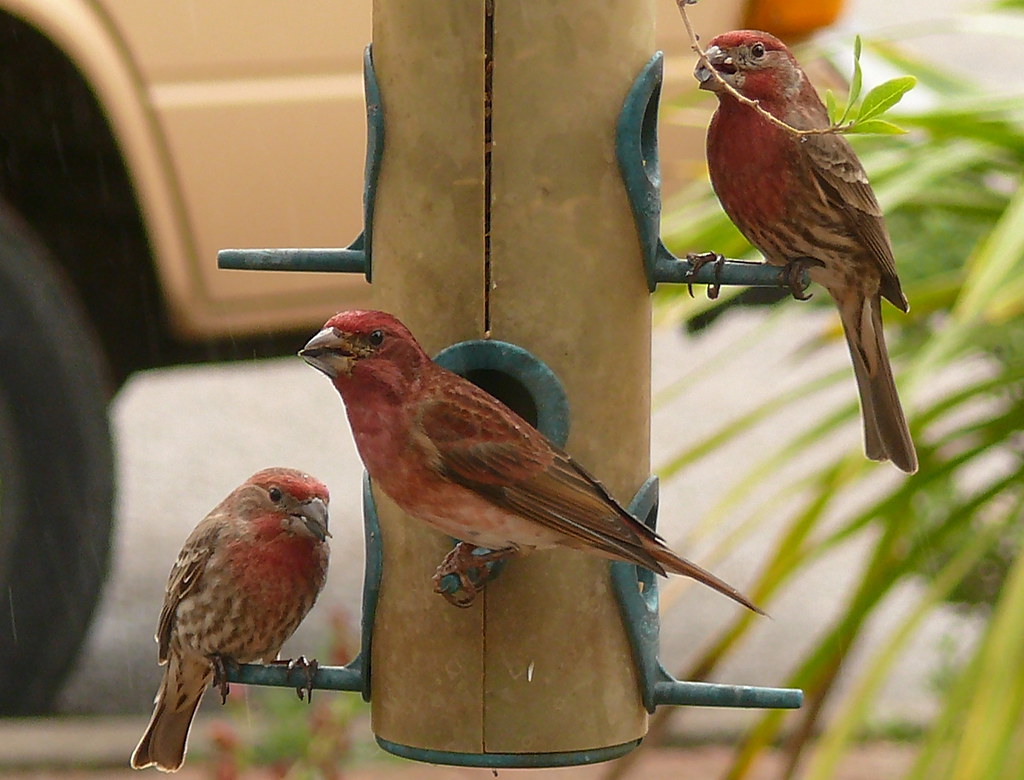

In winter Purple Finches can be seen eating seeds of weeds like dandelions, ragweed, and cocklebur. They also eat soft buds, nectar (consumed by biting the bases off flowers versus inserting their beak into the flower like hummingbirds), and a wide variety of berries and fruit, including blackberries, honeysuckle, crabapples, juniper berries, cherries, and apricots. Purple Finches eat mainly tree seeds such as those from coniferous trees and elms, tulip poplars, and maples, among others.

Bottom perch: breeding male Purple Finch.Īttracting Purple Finches to Your Feeder: This means the more pigment in the food, the more vibrant the male's coloration. Coloring can vary from bird to bird as the red of the male's coloring comes from pigments contained in its food during molt.

Instead, they are coarsely streaked on their undersides and have strong facial markings including a whitish eye band and a chunkier dark brown line down the side of the throat. Female Purple Finches have no pink or red coloration anywhere on the body. Male Purple Finches are a delicate dusky pink-red on the head and breast, mixing with brown on the back and cloudy white on the belly. Roughly 5 to 6 inches in length, these streaky grayish-brown finches are dimorphous, meaning male and female birds have different coloration. These small stocky-bodied finches have large powerful conical beaks, shorter wings, and a seemingly short notched tail.


 0 kommentar(er)
0 kommentar(er)
